Let the site tell you its secret.
Christopher Alexander
In Myanmar, the sacred is intertwined with everyday life. Sacred buildings, gold and white, rise from the landscape, a testament to the Buddha’s teachings. And the people weave their spirituality into their daily life. It’s not uncommon for families to head to the nearest temple at day’s end to enjoy a quiet time together as well as practice their devotions
I like to go to temples in the late afternoon and early evening so I can see the ordinary folk pay their respects to the Buddha. Botataung Pagoda in Yangon, borders the Yangon River where Strand Road intercepts Botataung Road in the east of the city. It’s an area where ordinary working folk live. At day’s end they leave their occupation and head to the pagoda.

In Myanmar, a pagoda or paya is the name for a temple complex consisting of a central stupa, which is a white or gold upside-down bell-shaped structure that houses a sacred relic – usually a hair of the Buddha. The stupa is a closed structure and sits in the middle of a marble platform, surrounding which are various other structures where the people can pray and present flowers and candles to Buddha statues.

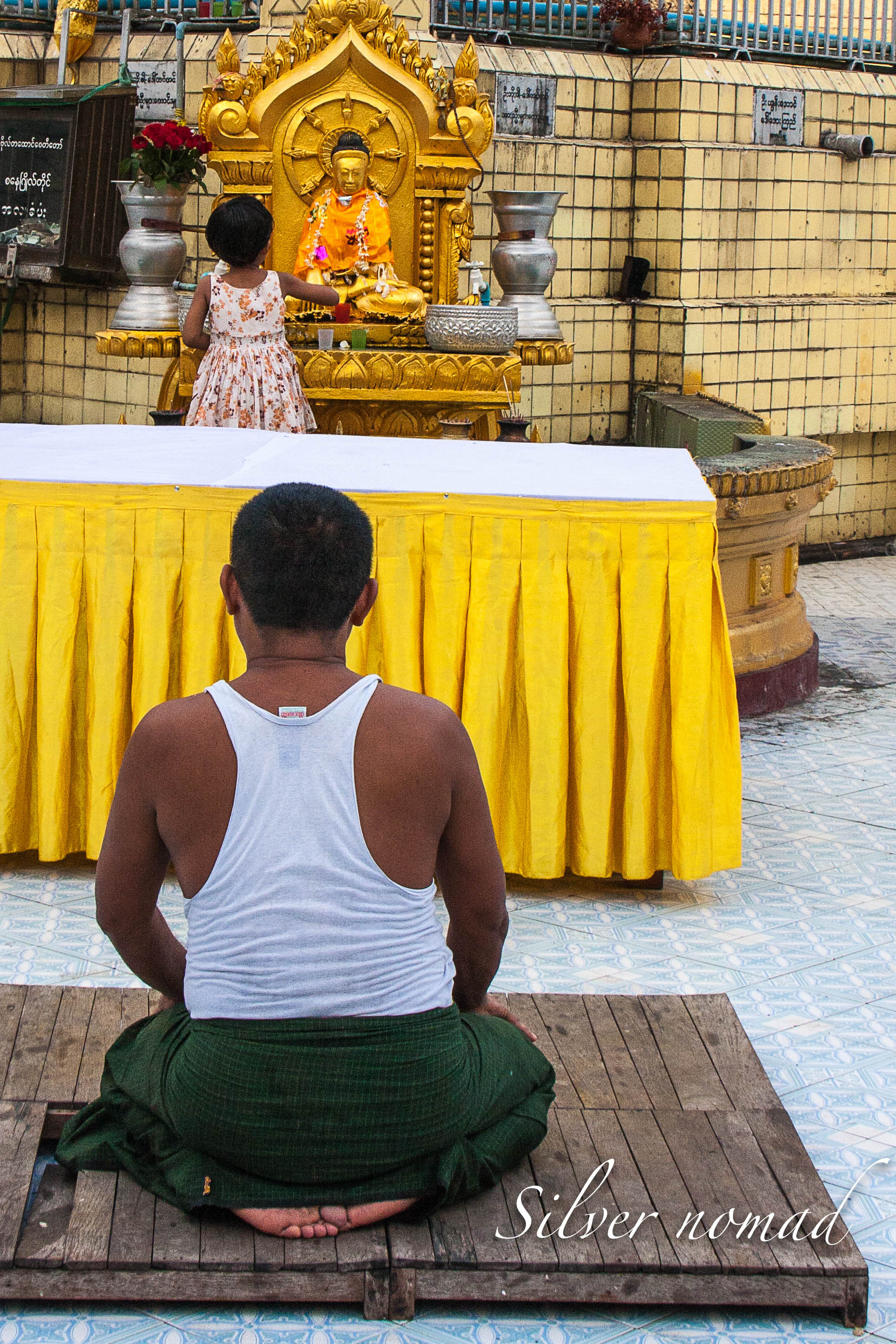
Botataung is unusual in that you can go inside the central stupa and see the golden receptacle that houses the Buddha’s hair. There’s not much space inside and everything is covered in gold. The devout touch the shrine gently, say a prayer and quietly file out.
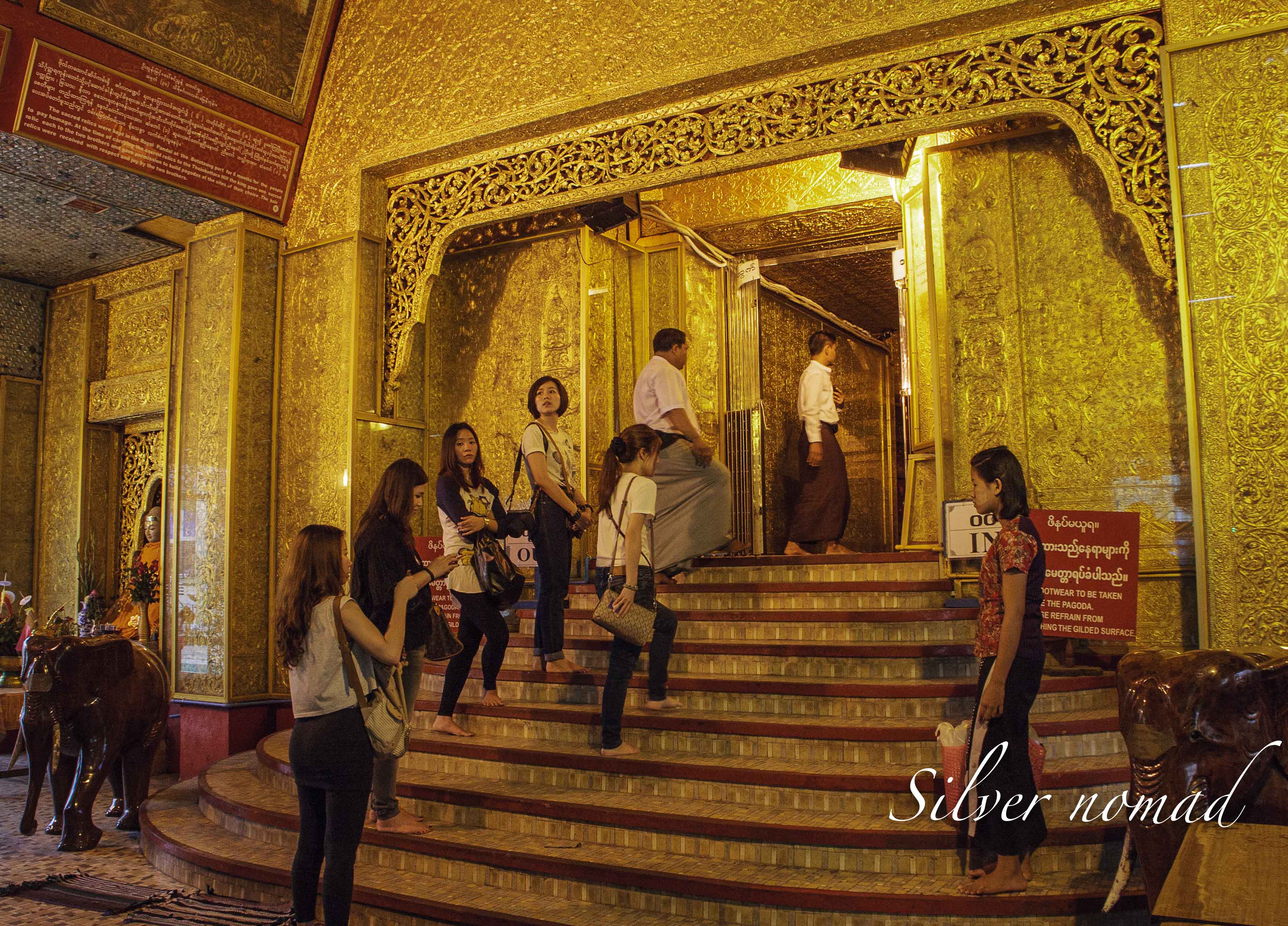
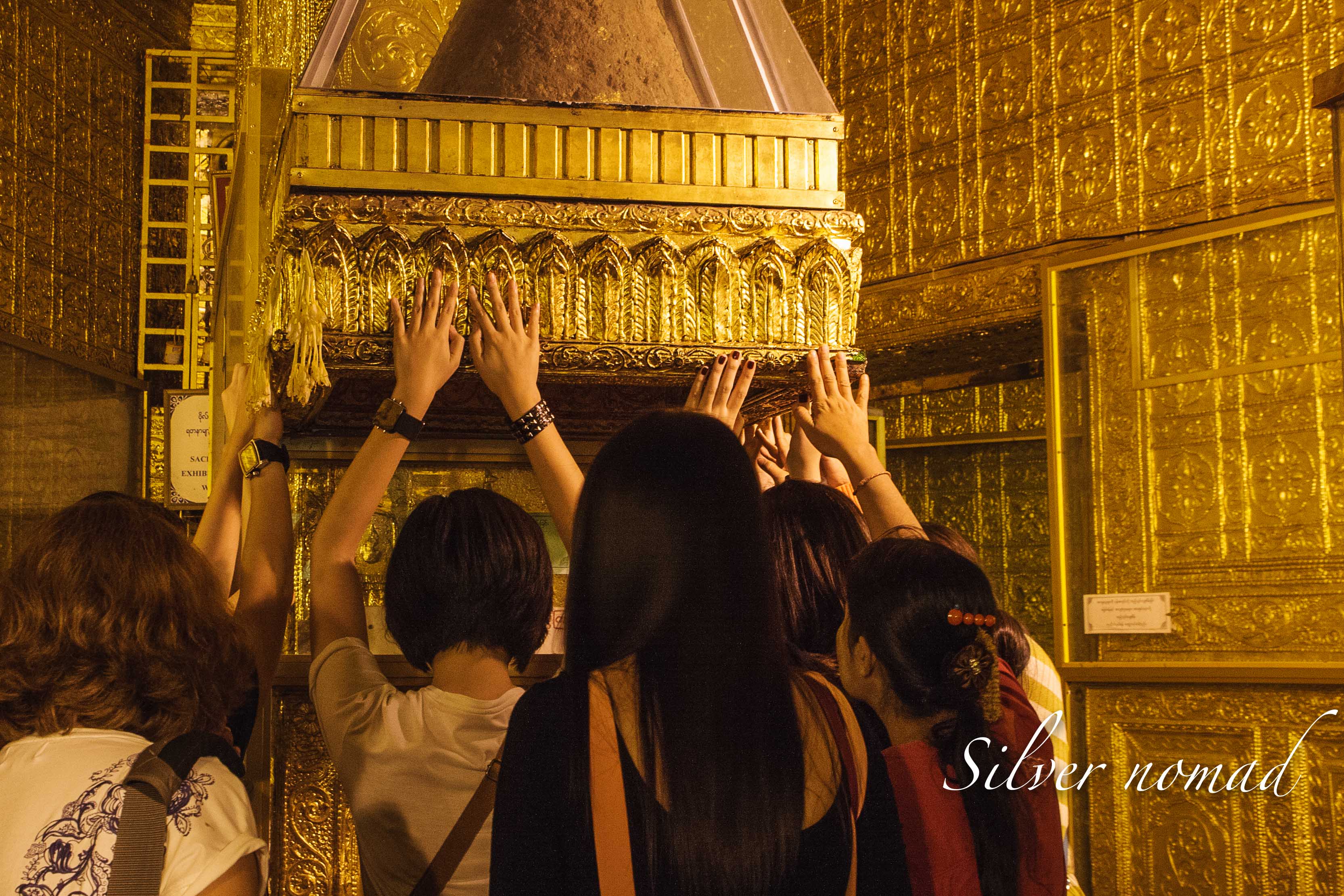
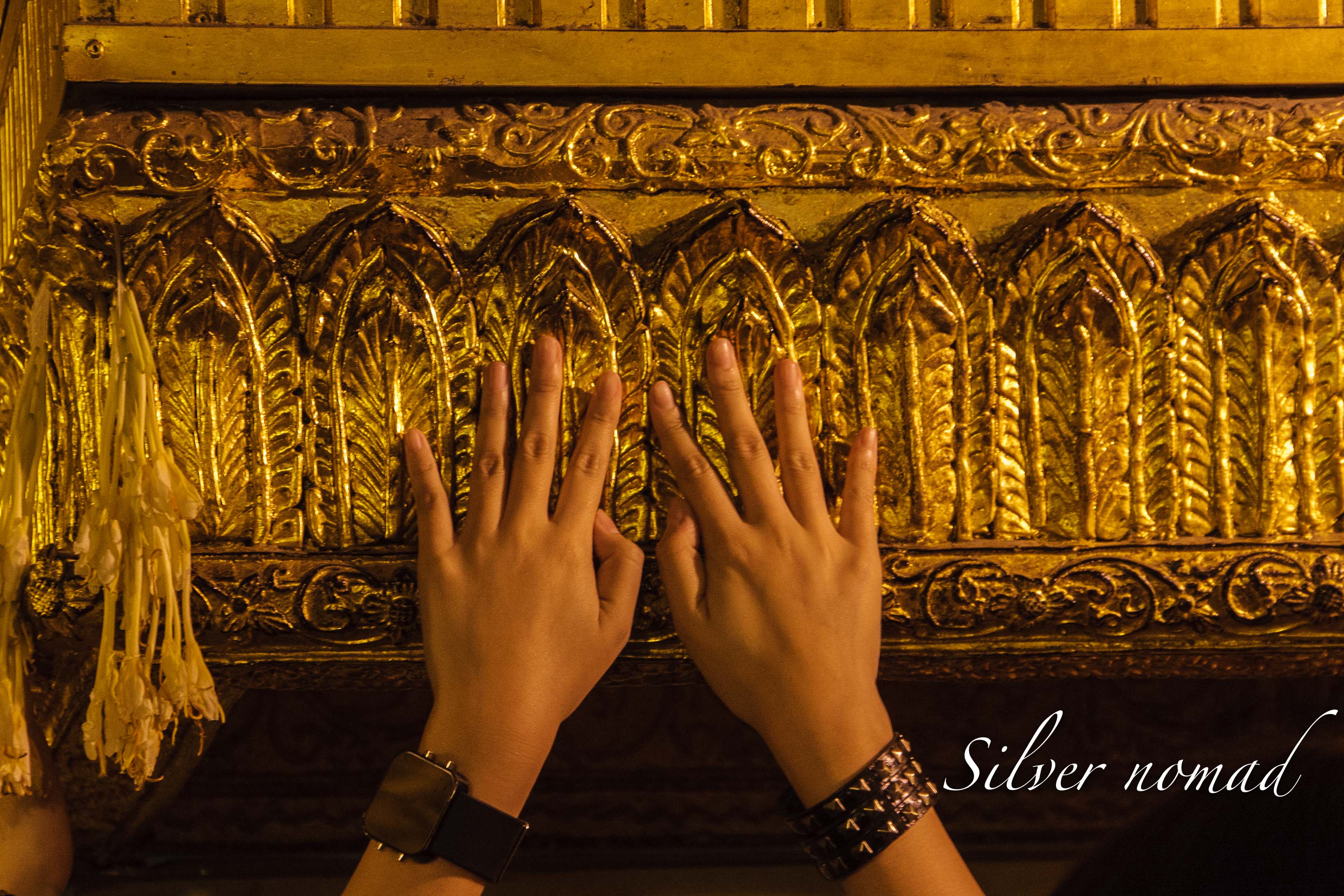
The marble slabs surrounding the stupa were warm to my feet at the end of the day. Two little girls were sitting on the marble, waiting for their mother who was pouring water over a Buddha statue. The elder of the little girls was teaching her sister to pay respects to the Buddha. Hands are placed together, touched to the head and the heart and the head is touched to the floor. The little one was a quick learner but her sister got distracted. She wanted to copy her mother and pour water over the Buddha.
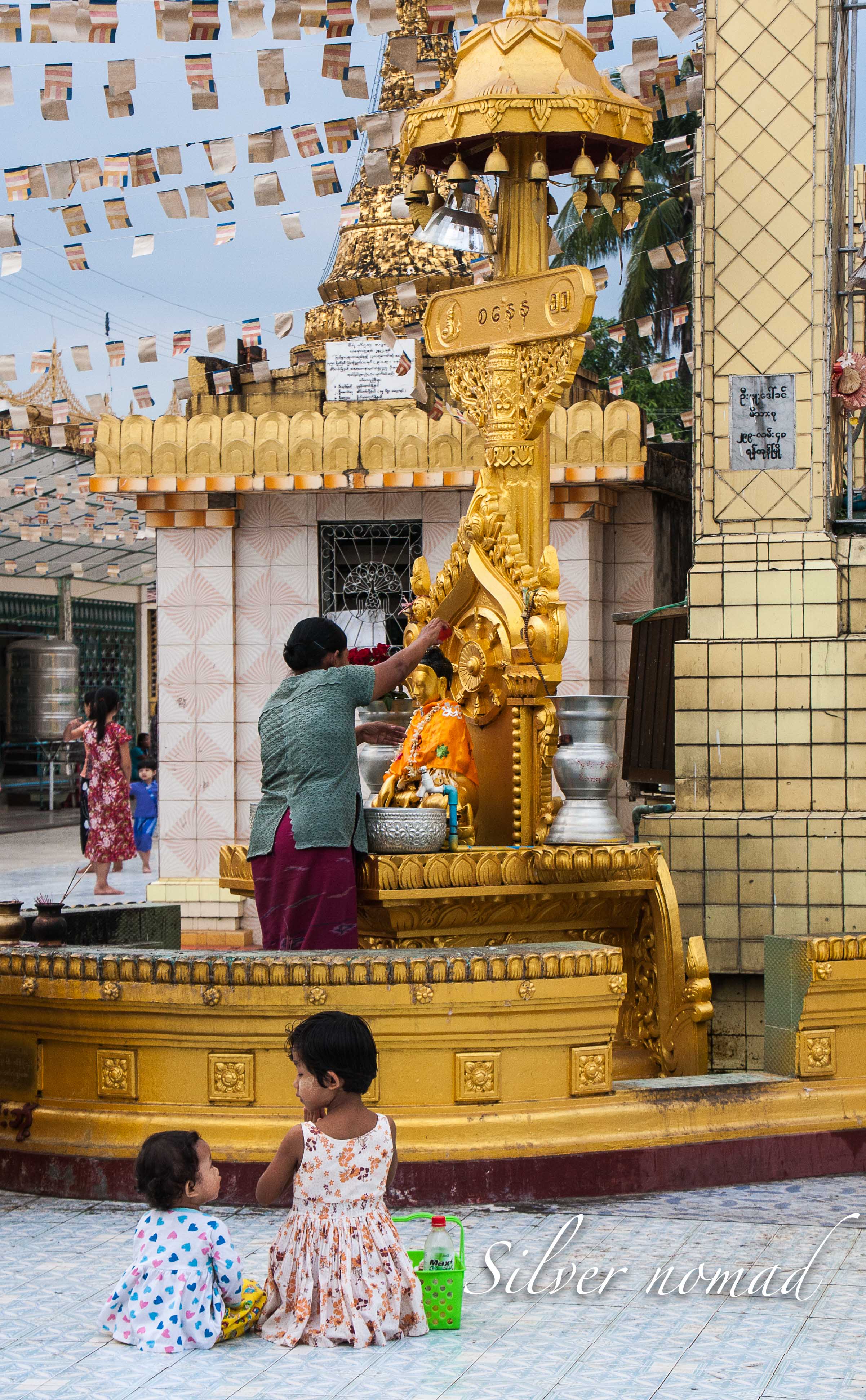
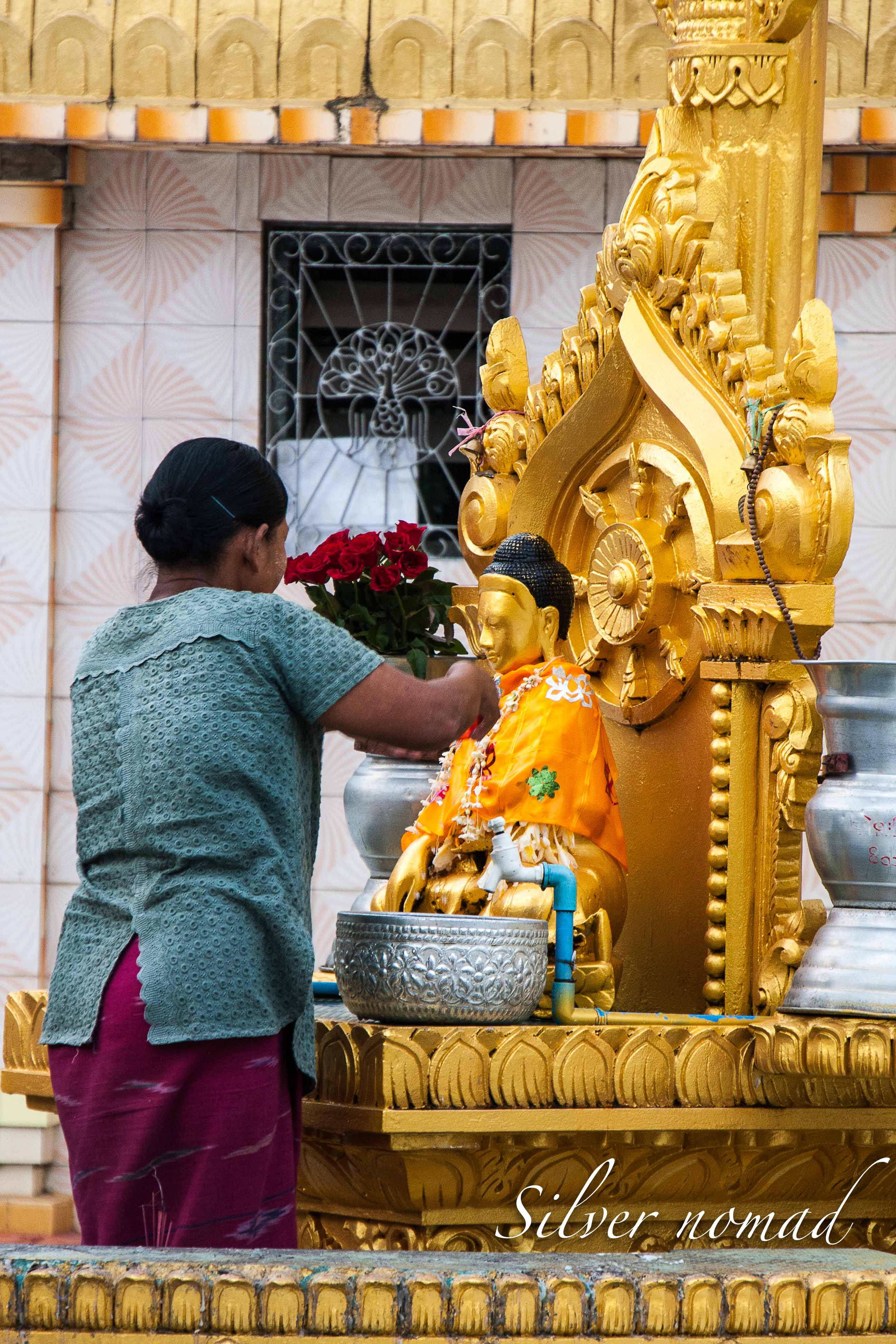
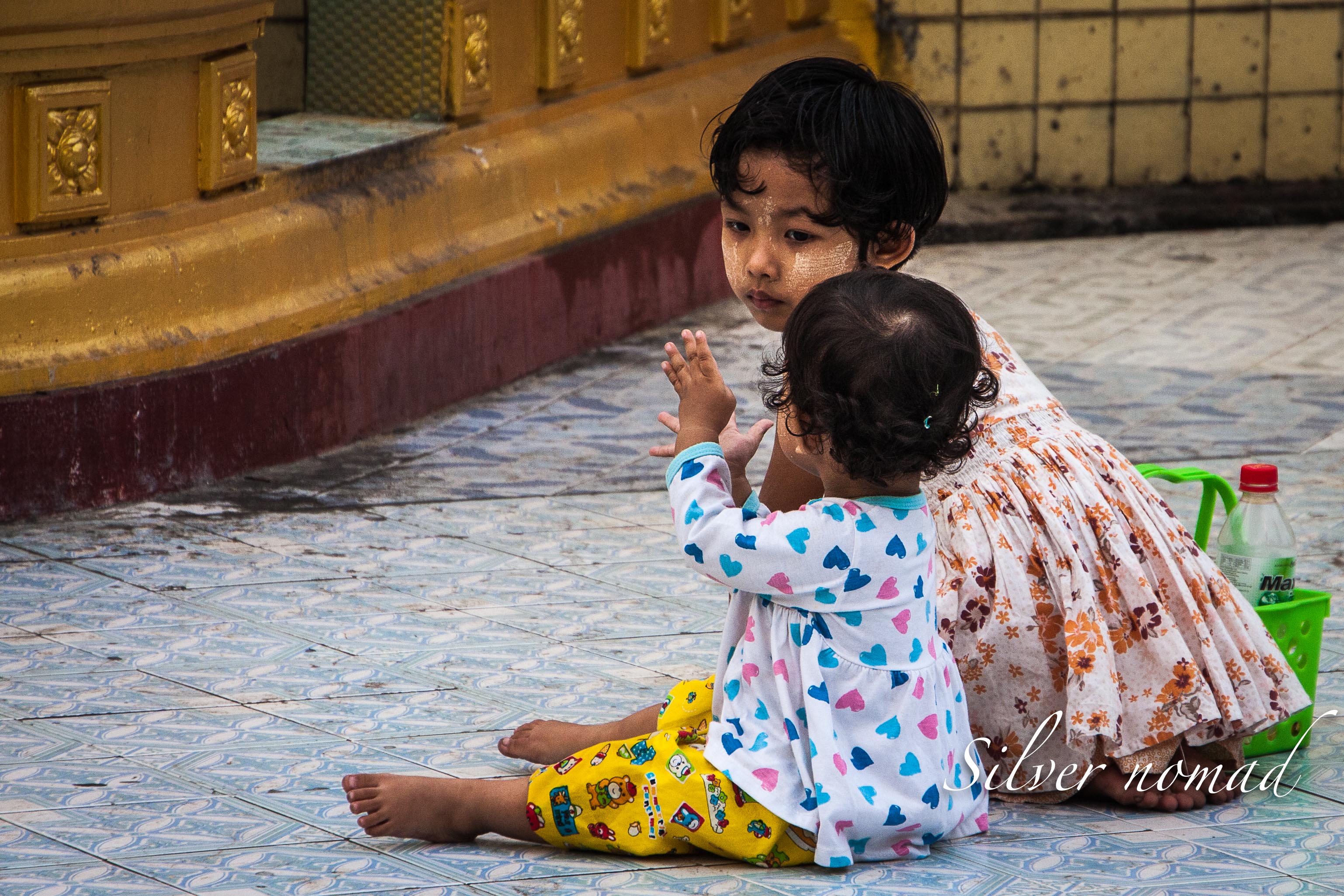
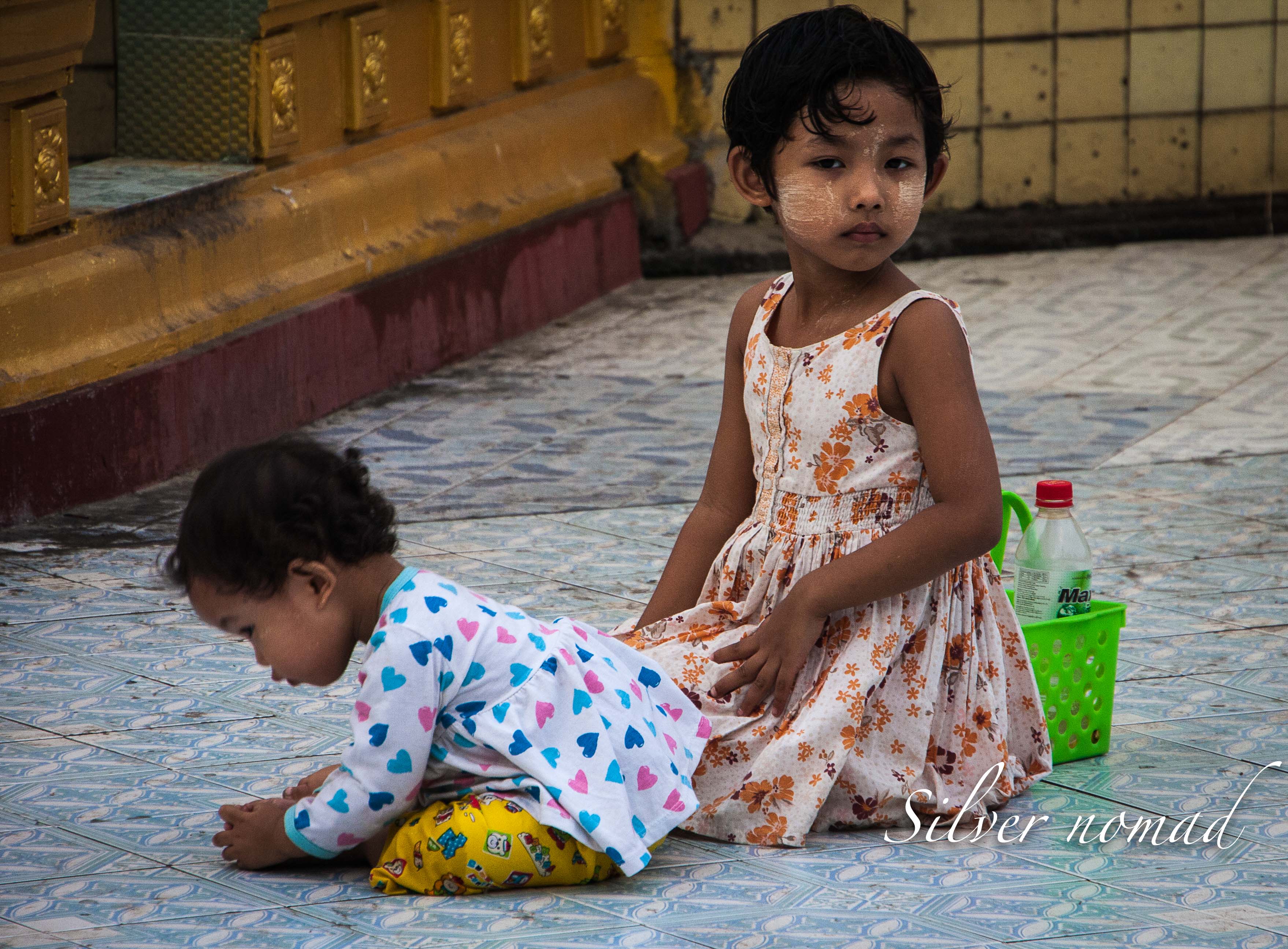
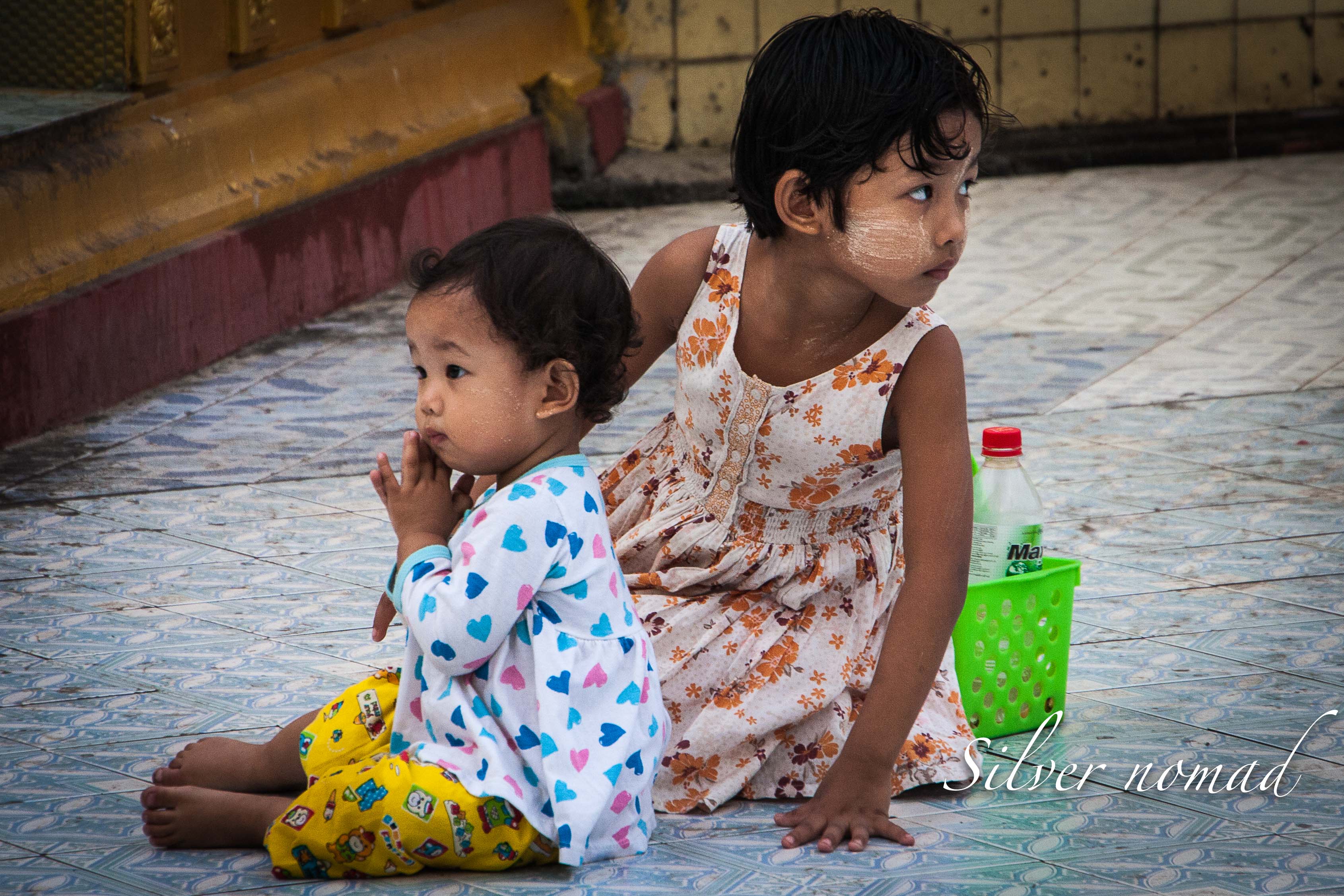
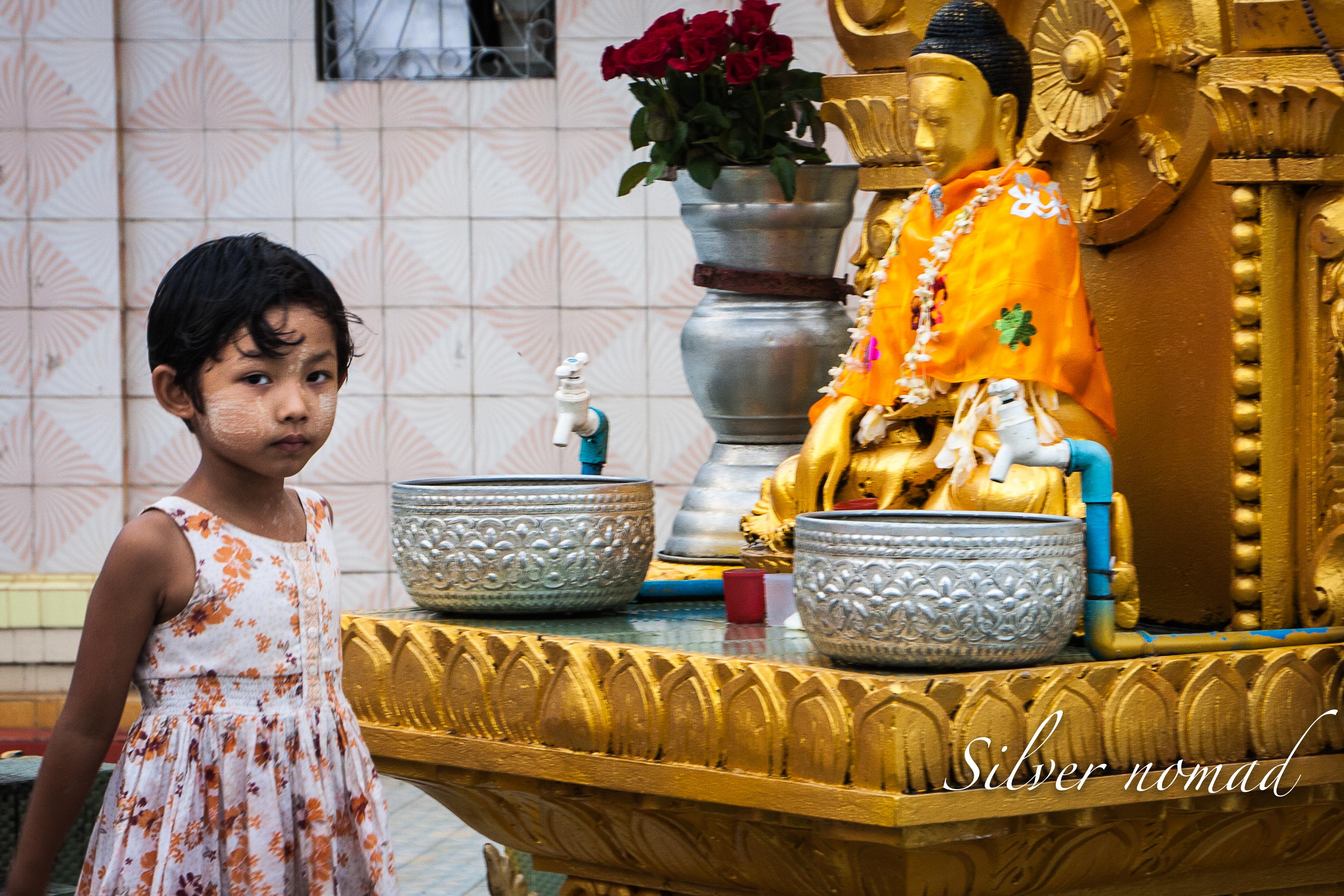
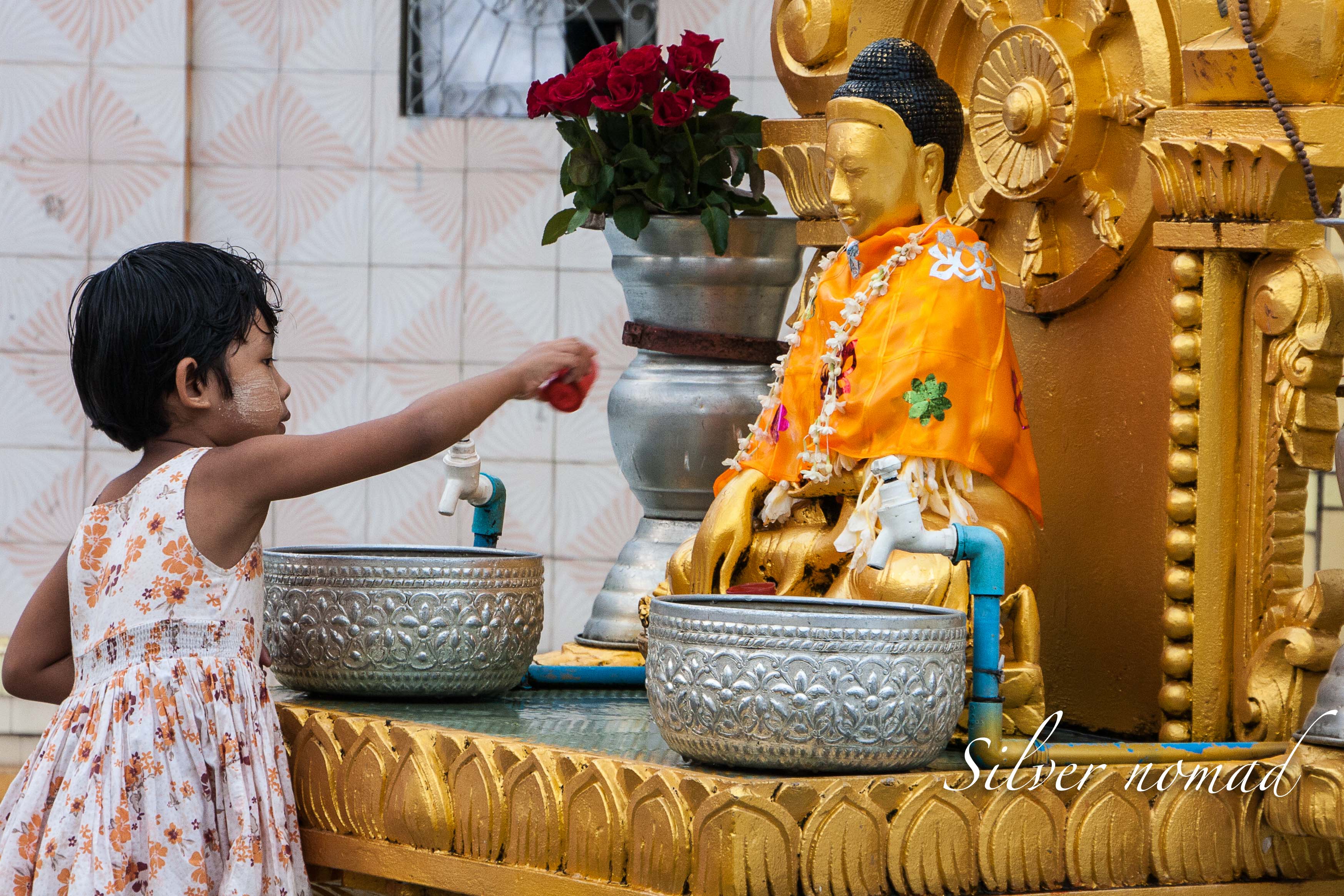
In a pagoda, Buddhas that represent the days of the week surround the central stupa. Buddhists pour water (as a sign of respect and for good luck and good karma) over the Buddha that sits at the corner for the day of the week on which they were born. You might be expecting to find seven Buddhas but there are actually eight because the Burmese split births on a Wednesday into morning and afternoon. I’m not exactly sure why but it has to do with the ancient Burmese calendar that has eight zodiac signs for the days of the week.

One friendly fellow, noticing my interest in the birth day Buddhas, came up to me, pulled out his smart phone and offered to find my day of birth with an app. I’m not sure which of us was the more surprised when his app only went back to 1950!
Still, the encounter did make me curious so I consulted the oracle known as the Internet and now I know my birth day was a Tuesday. Next time I go to a pagoda, I will head to the southeast corner and look for a Buddha with a lion statue.
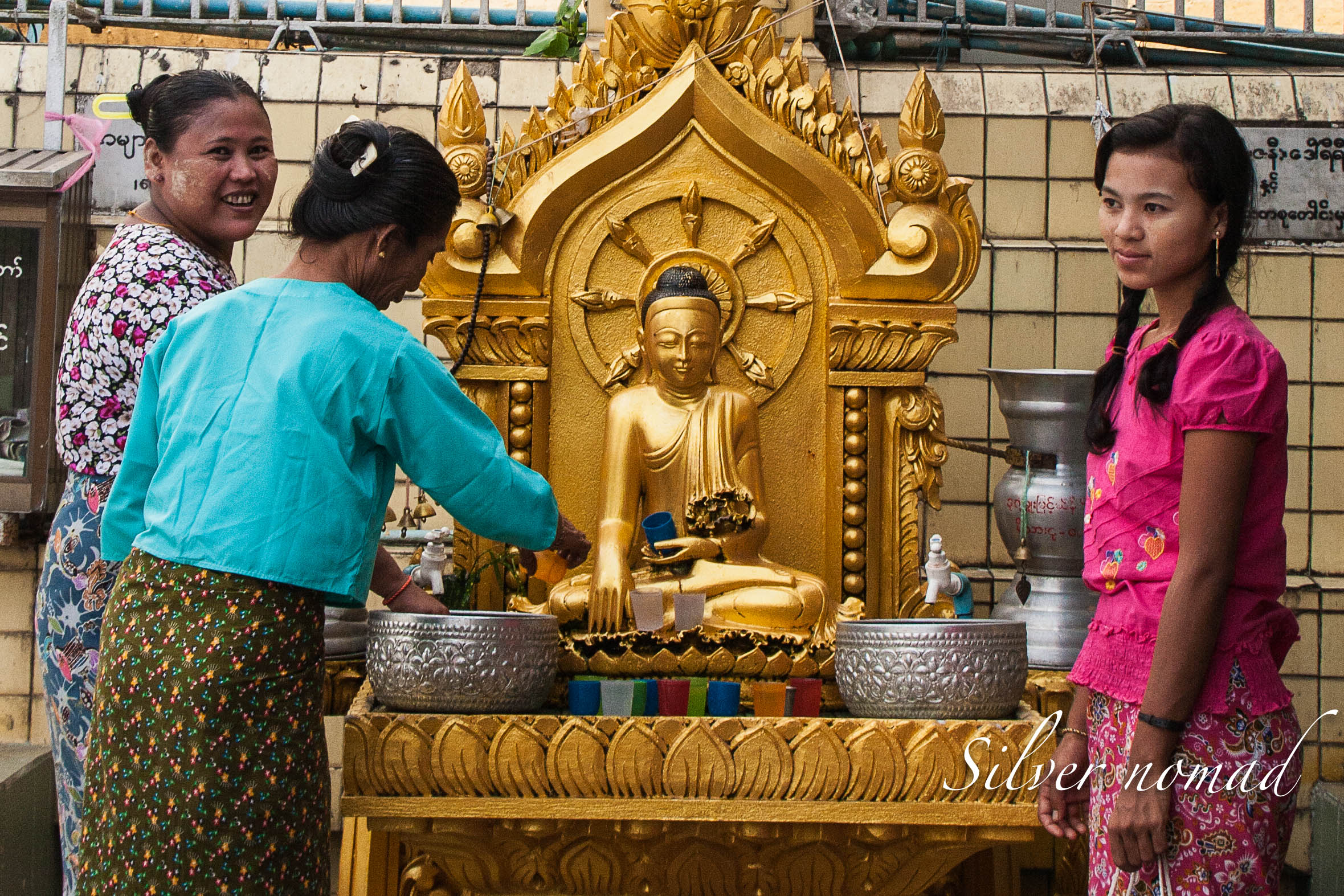
Privacy Policy


